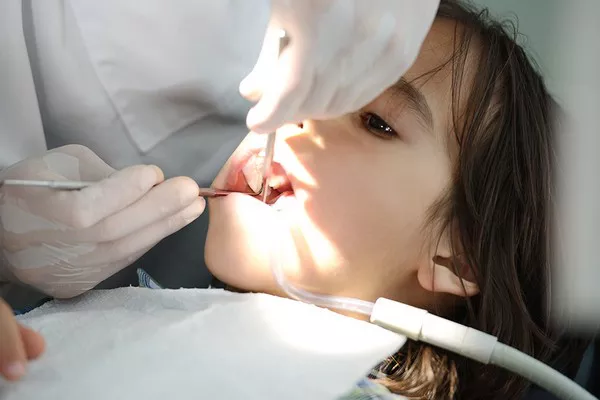In the realm of oral health, a deep cleaning is often considered a crucial step towards maintaining a vibrant and infection-free smile. Many individuals, however, find themselves pondering the average cost for a deep cleaning. In this comprehensive guide, we delve into the intricacies of this dental procedure, breaking down the factors that influence its cost and offering insights into why investing in oral hygiene is an investment in overall well-being.
1. The Core of Deep Cleaning: What Does it Encompass?
Deep cleaning, also known as scaling and root planing, is a dental procedure that goes beyond the regular cleaning performed during routine check-ups. It involves the removal of tartar and plaque from both above and below the gumline, reaching areas that are typically not addressed in standard cleanings. This thorough process aims to prevent and treat gum disease by eliminating the bacterial buildup that can lead to more severe oral health issues.
1.1 Surface-Level Cleaning: The Initial Step
The first facet of a deep cleaning involves the removal of plaque and tartar from the visible surfaces of the teeth. Dental professionals use specialized tools to scrape away these deposits, ensuring a clean and polished appearance.
1.2 Beneath the Surface: Targeting Sub-Gingival Areas
Delving deeper, the dental hygienist focuses on sub-gingival areas, reaching beneath the gums to remove accumulated plaque and tartar. This step is crucial in preventing and managing periodontal diseases that may arise from neglected oral hygiene.
1.3 Root Planing: Smoothing Out the Rough Edges
Root planing is the final step, involving the smoothing of the tooth roots to discourage further bacterial growth. This process aids in preventing the recurrence of gum disease and promotes the reattachment of gums to the teeth.
2. Factors Influencing the Cost of Deep Cleaning: Unraveling the Variables
Understanding the average cost for a deep cleaning involves recognizing the myriad factors that contribute to the final price tag. From geographical location to the severity of the dental issues being addressed, each element plays a role in determining the overall expense.
2.1 Geographical Disparities: Location Matters
The cost of dental procedures, including deep cleaning, can vary significantly based on geographic location. Urban areas tend to have higher living costs, which may be reflected in dental service charges.
2.2 Severity of the Condition: Addressing Intensity
The extent of plaque and tartar buildup, as well as the presence of gum disease, directly influences the complexity of the deep cleaning procedure. More severe cases may require additional time and specialized tools, impacting the overall cost.
2.3 Dental Professionals and Expertise: Quality Comes at a Price
Opting for a highly skilled and experienced dental professional often entails a higher cost. However, the expertise of the practitioner contributes to the effectiveness of the deep cleaning and ensures a thorough and precise procedure.
3. Average Costs Across the Nation: A Comparative Analysis
As of the latest available data, the average cost for a deep cleaning in the United States ranges from $200 to $400 per quadrant. However, these figures can fluctuate based on the factors discussed earlier.
3.1 East Coast vs. West Coast: Regional Variances
On the East Coast, major cities such as New York may witness slightly higher costs due to the increased living expenses. Conversely, the West Coast, with cities like Los Angeles, might experience comparable prices but with some regional fluctuations.
3.2 Midwest and South: Budget-Friendly Options
Regions in the Midwest and South generally exhibit lower average costs for dental procedures, including deep cleaning. This can be attributed to a lower cost of living and, consequently, more affordable healthcare services.
4. The Price of Prevention: Cost-Effective Strategies
While the average cost for a deep cleaning may seem like a considerable investment, it pales in comparison to the potential expenses associated with untreated gum disease and other oral health issues. Embracing preventive measures can prove to be a cost-effective strategy in the long run.
4.1 Regular Dental Check-ups: Nipping Issues in the Bud
Scheduling routine dental check-ups allows for the early detection of dental problems, preventing the escalation of minor issues into major concerns. This proactive approach can save both money and discomfort.
4.2 Consistent Oral Hygiene: Brushing and Flossing Matters
The foundation of good oral health lies in consistent and thorough oral hygiene practices. Regular brushing and flossing can significantly reduce the risk of plaque and tartar buildup, minimizing the need for extensive dental procedures.
4.3 Dental Insurance: Mitigating Financial Burdens
Exploring dental insurance options can provide financial assistance when it comes to covering the costs of deep cleaning and other oral health procedures. Many insurance plans offer coverage for preventive treatments, making them a worthwhile investment.
5. Conclusion: Navigating the Landscape of Dental Costs
In conclusion, understanding the average cost for a deep cleaning involves recognizing the multifaceted nature of the procedure and the various factors influencing its price. While costs may vary based on location, severity, and practitioner expertise, investing in preventive measures remains a cost-effective strategy for maintaining optimal oral health. Remember, the price of a deep cleaning is not just a financial investment; it’s an investment in a healthier, happier smile.
Related Links:
Unveiling the Truth: Is Invisalign Covered Under Orthodontics?
Mastering the Art of Removing Orthodontic Brackets: A Comprehensive Guide
Navigating the Financial Landscape: Are Orthodontics Covered by Insurance?





























